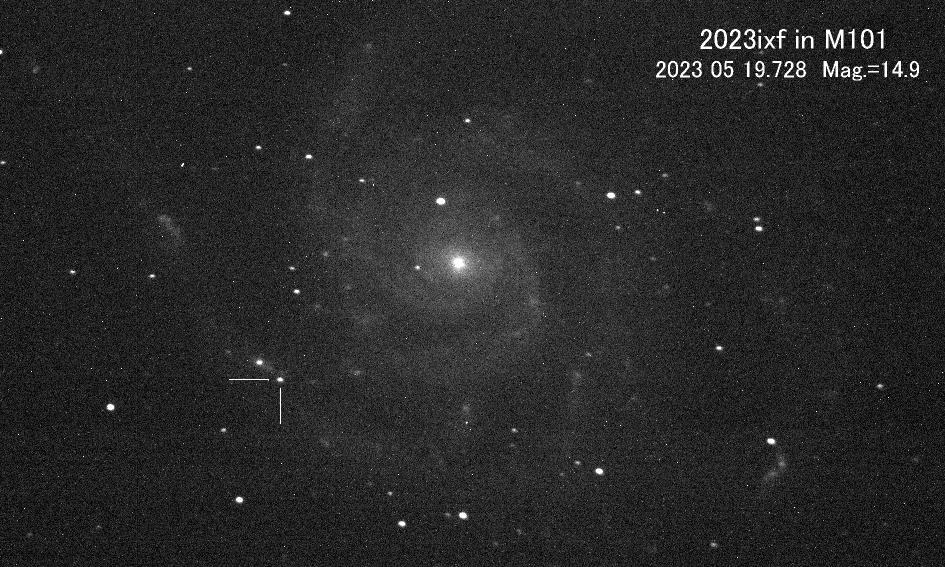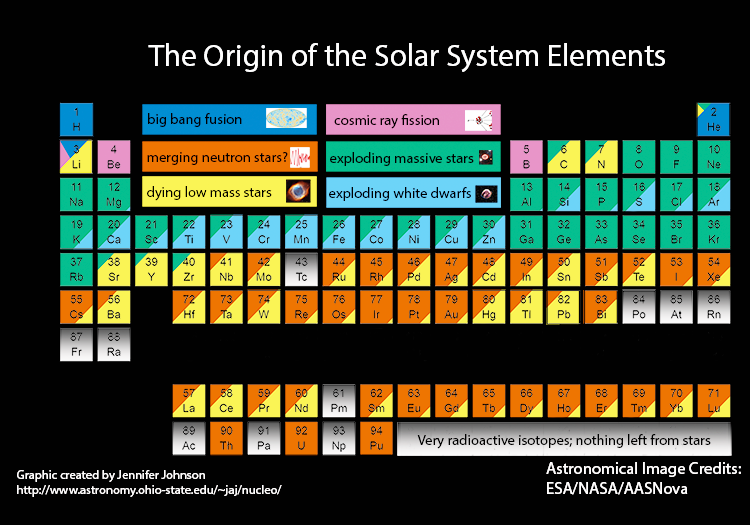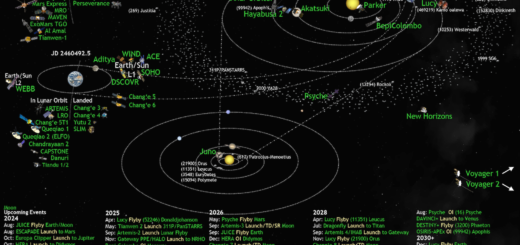Supernova in the Pinwheel
A supernova has been discovered in a nearby galaxy. This event is named SN 2023ixf. The “SN” stands for “supernova”, 2023 is the year, and the letters… well, it’s complicated. Phil Plait has a great supernova naming convention explainer if you’re interested.
And you should be interested! Let’s look at where SN2023ixf is, what it is, and why it matters.
WHERE
This bright supernova is occurring in the Pinwheel Galaxy, also commonly known as Messier 101 (M101). The galaxy is located in the constellation Ursa Major, which you may be more familiar with as the Big Dipper. Due to the time of year, the galaxy is in a good position in the night sky for observations.

The supernova is nearby on astronomical scales. The estimated distance to M101 is about 21 million light-years. That means the supernova we are watching happened 21 million years ago, and its light is just reaching us now! This distance also means it’s the closest supernova discovered in the last five years.
WHAT
A supernova represents the final death throes of a star. Not all stars become supernovae, though. There are two broad mechanisms by which supernovae may occur: 1) when a white dwarf explodes because a nearby companion star dumps enough material on it to trigger runaway nuclear reactions, causing the entire white dwarf to explode, and 2) the death of a high-mass star when nuclear reactions cease in its core, causing it to collapse and the outer layers of the star to fly off at high velocities.
Both types of supernovae emit a lot of energy; in fact, they can briefly outshine the galaxy they are in! Both types also lead to element production. Here is a fantastic version of the periodic table indicating how each element was formed; the green and light blue are the ones formed in supernovae!

WHY
The Pinwheel Galaxy is a popular target for observations, due to its brightness and its beauty. The location of SN 2023ixf is well-documented, so astronomers immediately knew the explosion occurred near a site of recent star formation. Because high-mass stars have short lifespans, the location itself implied a high likelihood of this being a Type II (core-collapse) supernova. Follow-up observations have confirmed this, so we know we are observing the death of a high-mass star. These explosions leave behind neutron stars or black holes, and we can look for evidence of those stellar remnants in the aftermath.
This supernova was discovered relatively soon after the explosion occurred. This will enable astronomers to get detailed observations of the rise and fall of its brightness. So, telescopes all around the world and in space have turned to take observations of this supernova. By current estimates, it should remain bright enough to be seen with a small backyard telescope throughout June.
Here is a fantastic Sky & Telescope article about SN 2023ixf, including images and a helpful finder chart. If you have a telescope, this is your chance to observe a bright, local supernova.
Wishing you clear skies!
If you’re interested in star forming regions, check out this recent Hubble Space Telescope image.



